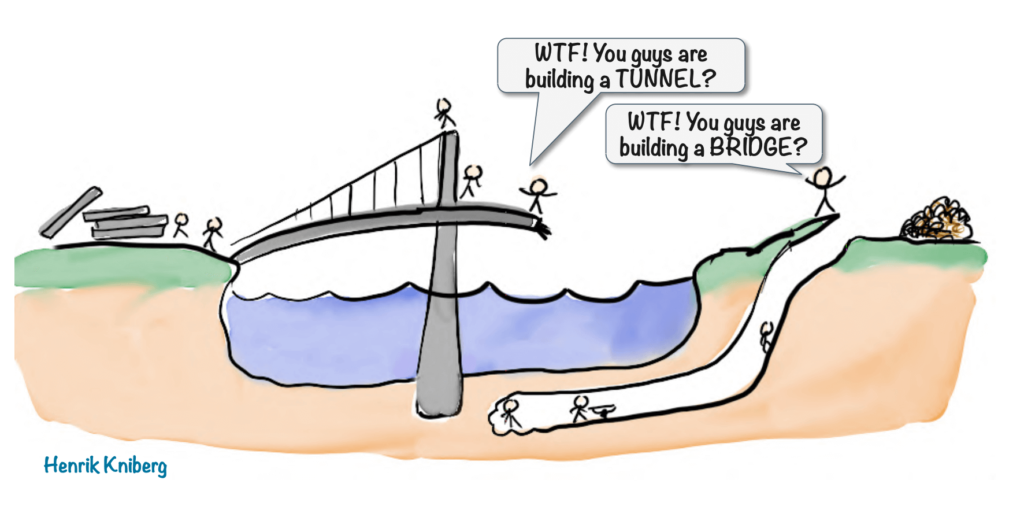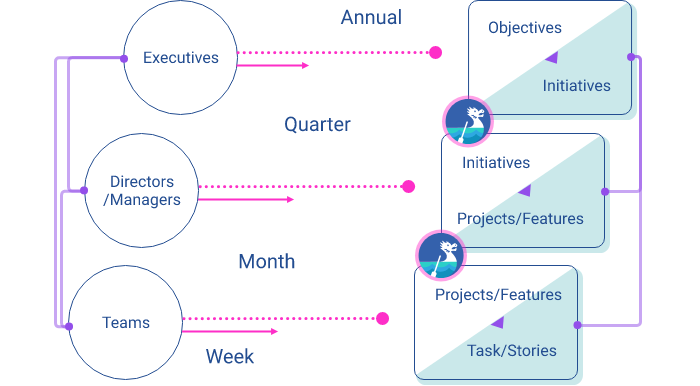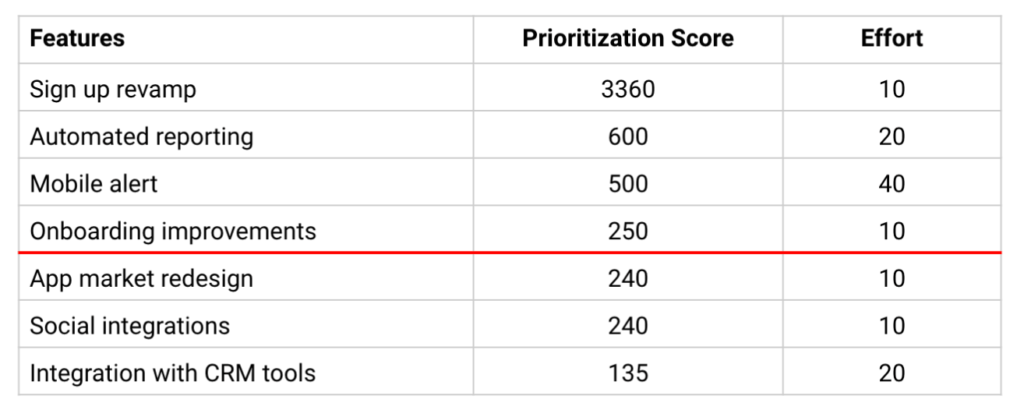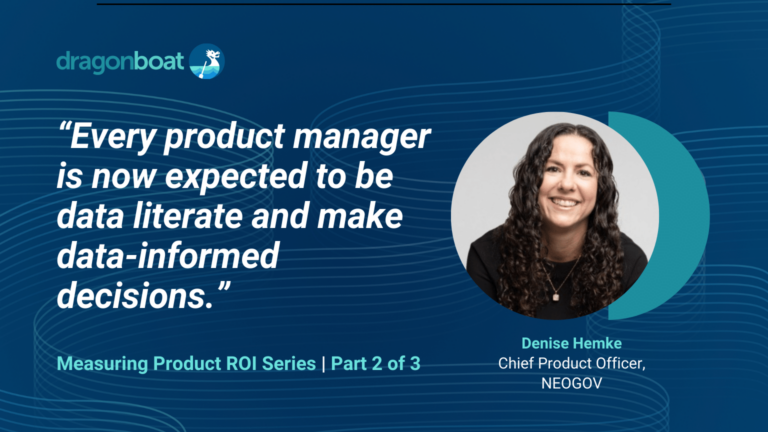Every product leader faces four portfolio risks to achieve business results (OKRs) and minimize opportunity costs.
- Strategic misalignment risk – leads to failure in achieving goals
- Prioritization risk – leads to siloed decisions and local optimization
- Delivery risk – leads to preventable product and business losses
- Opportunity risk – leads to slow response and declining competitive position
Let’s take a deeper look at how to mitigate product portfolio risks.
The Strategic Misalignment Risk
Successful product organizations rely on empowered teams to create the right products. However, as an organization scales, multiple teams and functions may be involved in building products. As there are many ways to achieve the same goal, the Strategic Misalignment Risk increases exponentially with each new product manager or team added. As illustrated in the example below, one team can build a bridge while the other digs a tunnel. Both aim to solve the same goal of connecting the two sides, but the strategies are misaligned.

To address the Strategic Misalignment Risk, product leaders need to create a Strategic Framework to guide product decision-making throughout the organizational levels.
The framework starts with creating strategic alignment at the portfolio level. This is called top-down strategic alignment – where leaders define goals and collaborate with the next levels to define the high-level strategies to achieve these goals. The flow of strategic direction on the right side of the diagram below shows the strategic alignment from the top down. Teams can also come up with strategies to achieve these goals. Strategies are aligned at the portfolio/ executive level. This bubble-up workflow is illustrated on the left side of the diagram. Regardless if leaders or teams come up with the strategy to achieve certain goals, the alignment must come from the top level to ensure clear guidance to the rest of the organization.

In today’s fast-changing environment, the focus and strategy change more frequently at the portfolio level. The strategic intent often gets lost or misinterpreted. Adopting a source of truth for the Product Portfolio is essential to enabling continuous and up-to-date context for everyone within the organization.
The Prioritization Risk
“As a product team, we prioritize features using RICE and then draw a cutline. Everything above the line goes to Engineering. And everything below the line needs to be deferred.”
You mean this is not a good way to prioritize?
This feature scoring type of prioritization approach should alarm you. It is a telltale sign of Prioritization Risk that may lead to siloed decisions, local optimization, and disjointed user experiences (aka product by org chart). Prioritization risk is the result of isolated prioritization without the big picture product portfolio context.

Compliment feature scoring with the following to address Prioritization Risk:
- Connect features with customers and goals
- Assess allocation across goals, customer segments, and other products
- Collaborate with the engineering team on different product solutions with different resource needs. Try manual workarounds/ non-product solutions temporarily to solve customer problems iteratively
- Evaluate portfolio scenarios and trade-offs

The Delivery Risk
I quit “company X” because their product teams over promise and under deliver. I had to deal with many angry customers and my angry sales teams. It was a no-win situation.
– anonymous Chief Revenue Officer
While engineering teams practice agile iteration, there are often needs to deliver product commitment. Not just for customers, but for the planning and execution of downstream, cross-functional teams who are involved in bringing the product to market.
Delivery risks are often due to dependencies, poor estimation, loss of resources, interruption, tech debt, or a sheer misunderstanding of the current progress vs target completion date.
To address Delivery Risk, product leaders need to
- Spot and account for dependencies during roadmap planning (aka quarterly roadmap planning)
- Assess and allocate appropriately for tech debt as part of portfolio planning
- Allocate for production support and unplanned interruptions to reflect the true capacity for feature development
- Track progress and trends to spot the risks early (e.g. leverage the smart alert feature in Dragonboat)
Leverage an integrated tool like Dragonboat that connects planning with execution and adds progress tracking, smart forecasts, and alerts to reduce the effort and skillset required in managing delivery risk.
The Opportunity Risk
Congrats, your released feature achieved its goal. Do you reduce its allocation in the next planning cycle? What if another product area is under-performing? Do you move additional allocation to this area?
If you don’t adjust portfolio allocation from time to time, you introduce Opportunity Risk.
During the current roadmap iteration, product teams may also see new opportunities arise, problems emerge or features get delayed. Their roadmaps need to change. The speed of roadmap changes introduces Responsive Risk.
Often product teams rely on skilled program managers to juggle spreadsheets, lengthy meetings, and back and forth “scenario” planning to Tetris roadmap changes.
In today’s fast moving world, an integrated, smarter tool is needed to reduce manual work and speed up decisions.
Product leaders need an integrated portfolio platform to lead their organizations. A platform that facilitates the best practices of product management, enabling effective decision-making at the individual PM level and across the portfolio.
– CPO, Feedzai
In Summary
To address the four key portfolio risks and ensure successful product portfolio management, product leaders should adopt:
- A strategic framework that addresses strategic misalignment risk.
- An integrated prioritization process that addresses siloed prioritization risk.
- A smart planning and tracking process that addresses delivery risk.
- A portfolio scenario process that addresses responsive risk.





